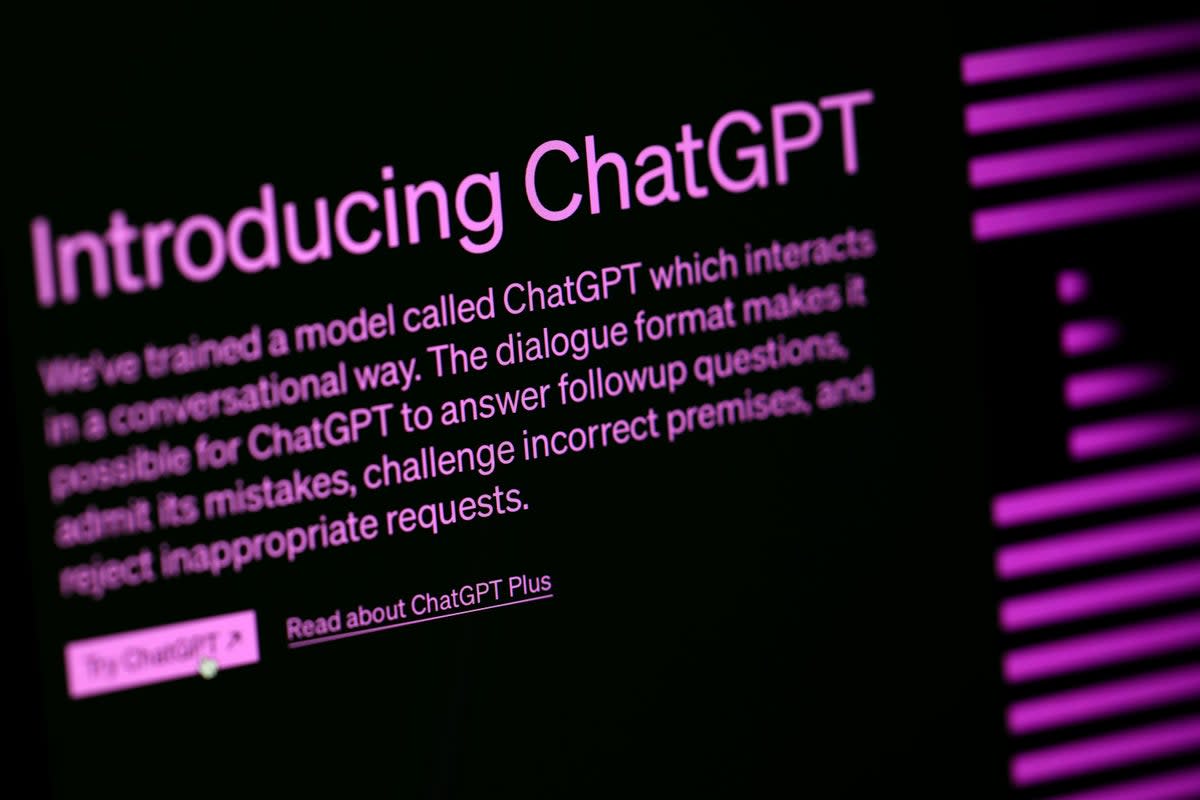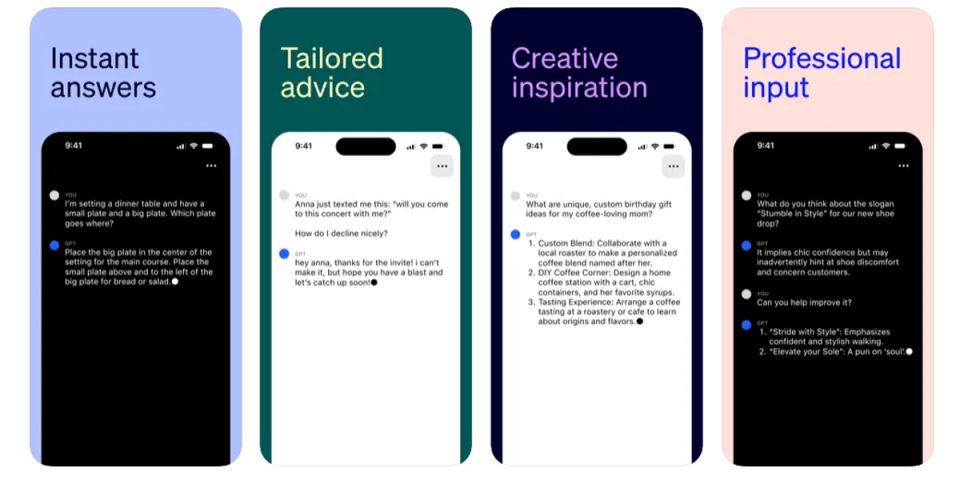ChatGPT 5 release date: what we know about OpenAI’s next chatbot

OpenAI is reportedly gearing up to release a more powerful version of ChatGPT in the coming months.
The new AI model, known as GPT-5, is slated to arrive as soon as this summer, according to two sources in the know who spoke to Business Insider. Ahead of its launch, some businesses have reportedly tried out a demo of the tool, allowing them to test out its upgraded abilities.
The tech forms part of OpenAI’s futuristic quest for artificial general intelligence (AGI), or systems that are smarter than humans.
This lofty, sci-fi premise prophesies an AI that can think for itself, thereby creating more AI models of its ilk without the need for human supervision. Depending on who you ask, such a breakthrough could either destroy the world or supercharge it.
As the race to build the best AI heats up, here’s everything you need to know about GPT-5.
What is GPT-5?
GPT-5 is the follow-up to GPT-4, OpenAI’s fourth-generation chatbot that you have to pay a monthly fee to use.
GPT stands for generative pre-trained transformer, which is an AI engine built and refined by OpenAI to power the different versions of ChatGPT. Like the processor inside your computer, each new edition of the chatbot runs on a brand new GPT with more capabilities.

In the case of GPT-4, the AI chatbot can provide human-like responses, and even recognise and generate images and speech. Its successor, GPT-5, will reportedly offer better personalisation, make fewer mistakes and handle more types of content, eventually including video.
Others such as Google and Meta have released their own GPTs with their own names, all of which are known collectively as large language models.
Based on the human brain, these AI systems have the ability to generate text as part of a conversation.
Most interesting part of @sama talk: GPT5 and GPT6 are “in the bag” but that’s likely NOT AGI (eg something that can solve quantum gravity) without some breakthroughs in reasoning. Strong agree.
— Omar Shams (@smahsramo) September 24, 2023
Is GPT-5 being trained?
The latest report claims OpenAI has begun training GPT-5 as it preps for the AI model’s release in the middle of this year. Once its training is complete, the system will go through multiple stages of safety testing, according to Business Insider.
As part of this process, the bot will be “red teamed,” a technique that involves internal and external testers putting it through its paces and providing feedback on its strengths and weaknesses.
The report follows speculation that GPT-5’s learning process may have recently begun, based on a recent tweet from an OpenAI official.
There’s no adrenaline rush like launching a massive gpu training
— Jason Wei (@_jasonwei) January 25, 2024
In January, one of the tech firm’s leading researchers hinted that OpenAI was training a much larger GPU than normal. The revelation followed a separate tweet by OpenAI’s co-founder and president detailing how the company had expanded its computing resources.
Short for graphics processing unit, a GPU is like a calculator that helps an AI model work out the connections between different types of data, such as associating an image with its corresponding textual description.
Building at OpenAI is an exercise in maximally harnessing each available computing resource, scientifically predicting and understanding the resulting systems, searching for new ideas or old ones that are now ready to work, and scaling beyond precedent.
— Greg Brockman (@gdb) January 25, 2024
For his part, Mr Altman confirmed that his company was working on GPT-5 on at least two separate occasions last autumn.
The first of those was during a talk at his former venture capital firm Y Combinator’s alumni reunion last September, according to two people who attended the event. Mr Altman said that GPT-5 and its successor, GPT-6, “were in the bag” and were superior to their predecessors.
Building in AI? Here are gems from a comprehensive talk by @sama at @OpenAI, from the @ycombinator
alumni reunion weekend:
Most important lessons from early days of building:
🔸Thinking long term will take you far. Open AI experienced [many] pivots. From robotic arms to… pic.twitter.com/ikDJ2CcS4F— Iba Masood (@IbaMasood) September 24, 2023
In November, he made its existence public, telling the Financial Times that OpenAI was working on GPT-5, although he stopped short of revealing its release date.
More recently, a report claimed that OpenAI’s boss had come up with an audacious plan to procure the vast sums of GPUs required to train bigger AI models.
To overcome the supply shortages hampering technological innovation, Mr Altman wants to raise as much as $7 trillion to fast track chip-making with the help of a global network of investors, governments and energy providers, according to the Wall Street Journal.
What can GPT-5 do?
In February, the OpenAI chief spoke about GPT-5 at the World Governments Summit in Dubai. He said the next version of ChatGPT is going to be smarter than its predecessors.
“This is a bigger deal than it sounds, because what makes these models so magical is that they're general,” Mr Altman explained. “So, if it's a little bit smarter, it's a little better at everything.”
Hinting at its brain power, Mr Altman told the FT that GPT-5 would require more data to train on. The plan, he said, was to use publicly available data sets from the internet, along with large-scale proprietary data sets from organisations. The last of those would include long-form writing or conversations in any format.
Speaking on Bill Gates' Unconfuse Me podcast in mid-January, Mr Altman said: "Multimodality will definitely be important. Which means speech in, speech out. Images. Eventually video. Clearly, people really want that. We’ll be able to push that much further but maybe the most important areas of progress will be around reasoning ability."
He continued: "Right now, GPT-4 can reason in only extremely limited ways. Also reliability. If you ask GPT-4 most questions 10,000 times, one of those 10,000 is probably pretty good but it doesn’t always know which one, and you’d like to get the best response of 10,000 each time, and so that increase in reliability will be important."
GPT-5 versus GPT-4
So, how can it beat GPT-4? Chiefly, it will need to outdo GPT-4 Turbo, the next-generation model that OpenAI released in November to paying subscribers.
The company’s most advanced AI chatbot has knowledge of world events up to April 2023, compared with 2021 for GPT-4; it can analyse even longer prompts of up to 128,000 tokens or roughly the length of a 300-page book; it's better at following instructions; and it can automatically switch between tools, including the Dall-E 3 image generator and Bing search engine, based on user requests.

Both OpenAI and several researchers have also tested the chatbot on real-life exams. GPT-4 was shown as having a decent chance of passing the difficult chartered financial analyst (CFA) exam. It scored in the 90th percentile of the bar exam, aced the SAT reading and writing section, and was in the 99th to 100th percentile on the 2020 USA Biology Olympiad semifinal exam.
When will GPT-5 be available?
At the time of writing, OpenAI hasn’t announced a launch date for GPT-5.
It’s also unclear if it was affected by the turmoil at OpenAI late last year. On November 17, Mr Altman was ousted by the company’s board of directors. Following five days of tumult that was symptomatic of the duelling viewpoints on the future of AI, Mr Altman was back at the helm along with a new board.
I was initially skeptical that these screenshots were real, but this does seem to be replicable on my end.
Whether this means it’s actually GPT-4.5 behind the scenes or not… who knows. https://t.co/FZrc4K4VqK pic.twitter.com/TrQYSmFhAn— Matt Shumer (@mattshumer_) December 17, 2023
Curiously, some ChatGPT users previously claimed the bot had told them it was running on a new AI model called GPT-4.5 Turbo, but that turned out to be an error.
If OpenAI’s GPT release timeline tells us anything, it’s that the gap between updates is growing shorter. GPT-1 arrived in June 2018, followed by GPT-2 in February 2019, then GPT-3 in June 2020, and the current free version of ChatGPT (GPT 3.5) in December 2022, with GPT-4 arriving just three months later in March 2023. More frequent updates have also arrived in recent months, including a “turbo” version of the bot.
So, could June be the magic month again? Or will OpenAI wait till its developer day conference, probably in November, to announce GPT-5? We’ll have to wait and see.


